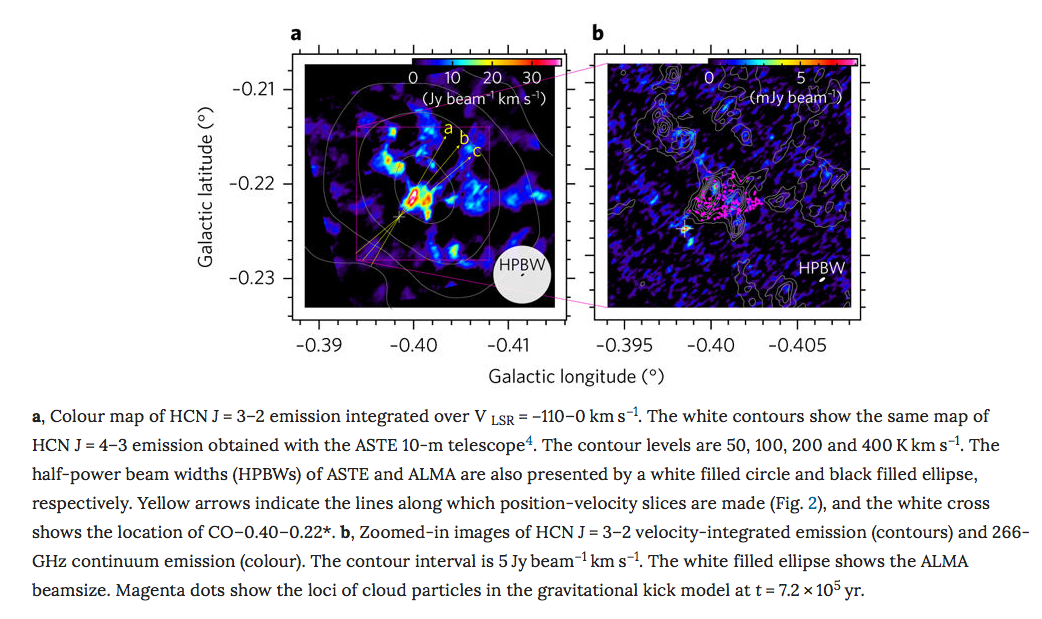
Credit: Oka et al. 2017
Black holes are divided, based on their mass, into supermassive black holes (SMBHs) with masses more than 1 million suns together that reside in the centre of the galaxies and stellar black holes with masses up to 20 times the mass of our sun. The mechanism that creates the later, is well understood however, the origin of SMBHs remains uncertain. One possible scenario that has been proposed is that supermassive black holes are formed from smaller intermediate mass black holes (IMBHs) that merge together. But then, how are IMBHs formed? A new study tries to shed light to this question.
Astronomers used observations from the Atacama Large Millimeter/submillimeter Array (ALMA) to take high-resolution images and the XMM-Newton satellite to obtain X-ray data of the compact cloud named CO-0.40-0.2. The compactness of the object and the fact that has not been observed at other wavelengths, suggests it is an inactive IMBH that is not currently accreting matter. This is the second largest black hole candidate in the Milky Way after Sgr A* and the second IMBH in our Galaxy.
Based on their analysis, the team of astrophysicists suggested that the object CO-0.40-0.22 used to be the nucleus of a dwarf galaxy that was cannibalized by our Milky Way. This merger event probably took place about 200Myr ago. Further observations could increase the number of such non-luminous black hole candidates and therefore increase targets to search for evidential proof of general relativity.
Publication: Oka et al. 2017
Source: Nature Astronomy
